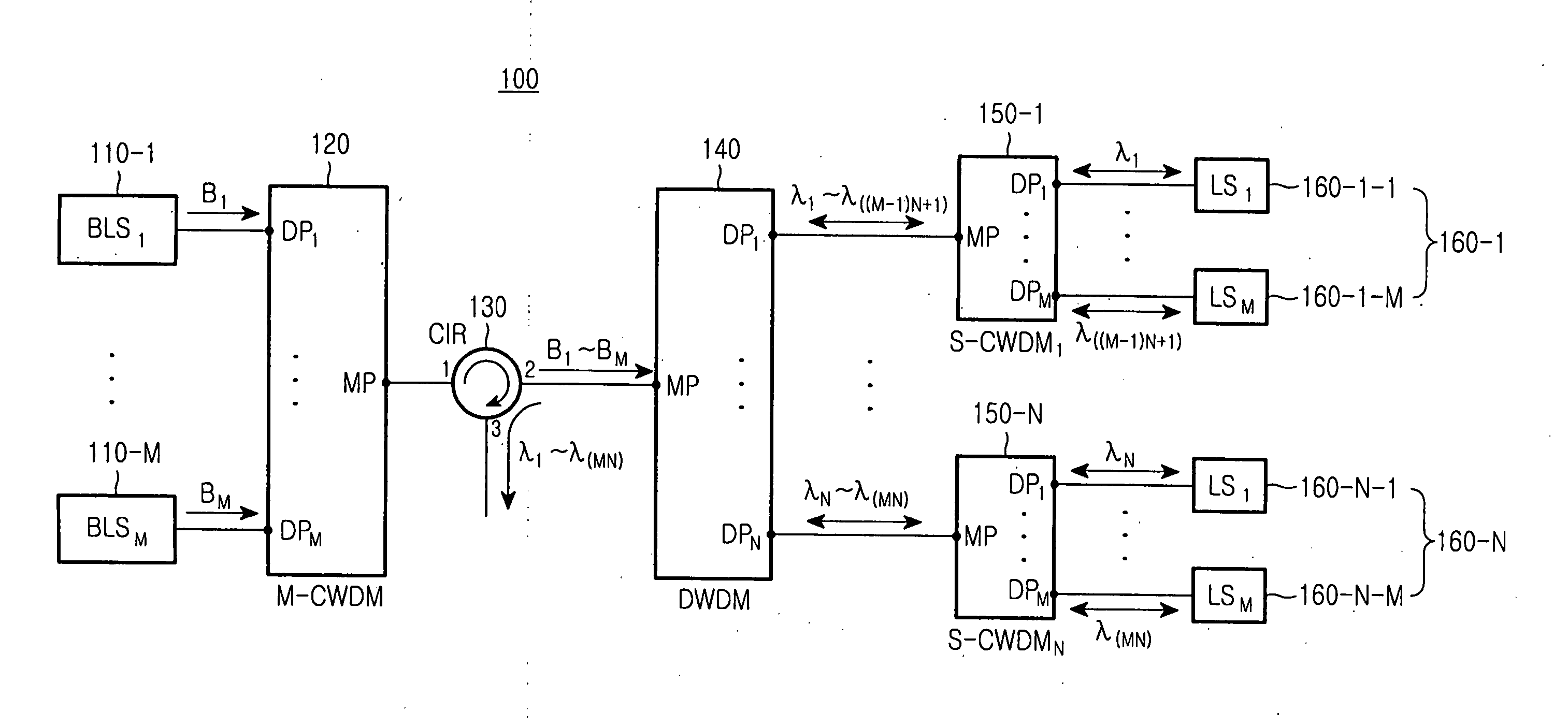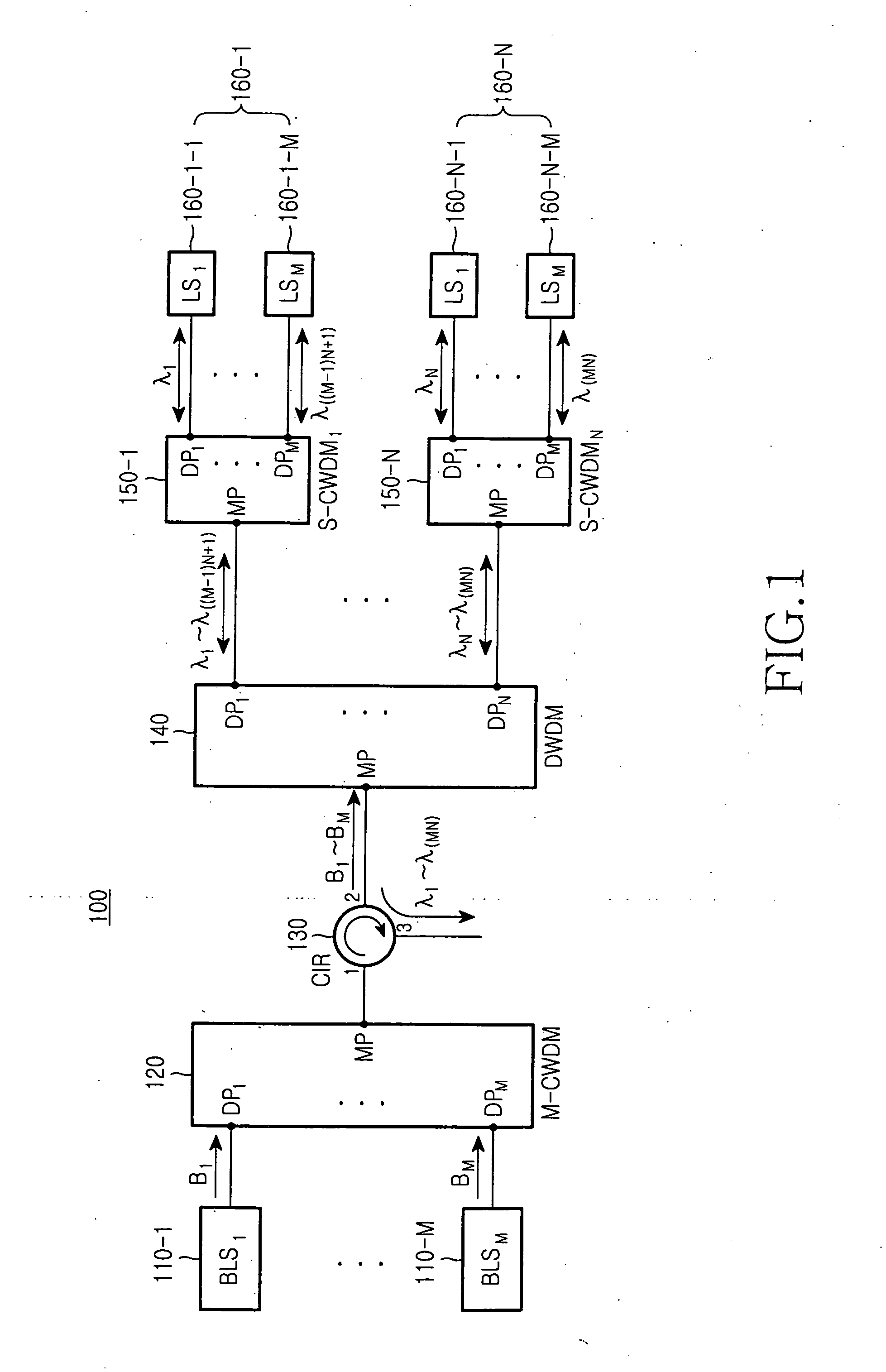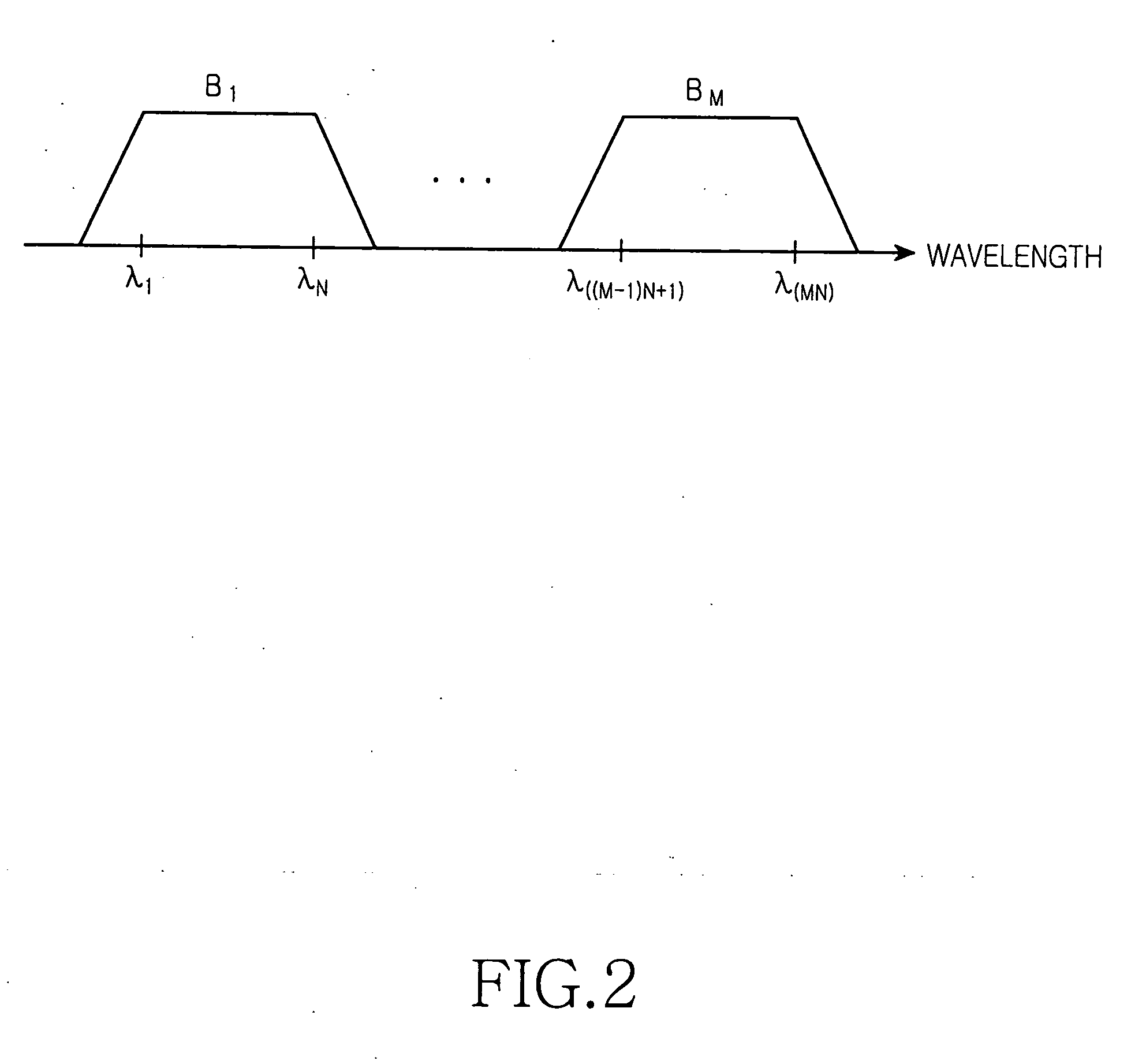Wavelength division multiplexed light source and passive optical network using the same
a technology of multiplexing light source and optical network, applied in multiplex communication, instruments, optical elements, etc., can solve the problems of increasing the cost of realizing the optical network using the dense wavelength division multiplexer, increasing the cost of realizing the optical network, and increasing the cost of arranging the waveguide grating,
- Summary
- Abstract
- Description
- Claims
- Application Information
AI Technical Summary
Benefits of technology
Problems solved by technology
Method used
Image
Examples
first embodiment
[0040]FIG. 7 provides, by way of illustrative and non-limitative example, a passive optical network using a wavelength division multiplexing scheme according to the present invention. The passive optical network 300 includes a central office 310, remote node 390 connected to the central office 310 through trunk optical fibers 380, and subscriber side apparatus 430 connected to the remote node 390 through distributed optical fibers of the first, second, third, . . . , Nth groups 420-1, 420-2, 420-3, . . . , 420-N.
[0041] The central office 310 includes the first, second, third, . . . , Mth broadband light sources 320-1, 320-2, 320-3, . . . , 320-M; a main coarse wavelength division multiplexer (M-CWDM) 330; an optical circulator (CIR) 340; a dense wavelength division multiplexer (DWDM) 350; the first, second, third, . . . , Nth secondary coarse wavelength division multiplexer (S-CWDM) 360-1, 360-2, 360-3, 360-N; and external light injection type light sources 370-1-1, 370-1-2, 370-1-3...
second embodiment
[0053]FIG. 8 shows, by way of example, a passive optical network using a wavelength division multiplexed scheme according to the present invention. The passive optical network 500 includes a central office 510; a remote node 600 connected to the central office 510 through a trunk optical fiber 590; and a subscriber side apparatus 640 connected to the remote node 600 through distributed optical fibers 630-1, 630-2, 630-3, . . . , 630-N of the first, second, third, . . . , and Nth groups. In FIG. 8, a broken line is used to depict light, channel, and optical signal of an upstream wavelength band, and a solid line depicts light, channel and optical signal of a downstream wavelength band.
[0054] The central office 510 includes first, second, third, . . . , Mth downstream broadband light sources 520-1, 520-2, 520-3, . . . , 520-M; first, second, third, . . . , Mth upstream broadband light sources 530-1, 530-2, 530-3, . . . , 530-M; first and second main coarse wavelength division multiple...
PUM
 Login to View More
Login to View More Abstract
Description
Claims
Application Information
 Login to View More
Login to View More - R&D
- Intellectual Property
- Life Sciences
- Materials
- Tech Scout
- Unparalleled Data Quality
- Higher Quality Content
- 60% Fewer Hallucinations
Browse by: Latest US Patents, China's latest patents, Technical Efficacy Thesaurus, Application Domain, Technology Topic, Popular Technical Reports.
© 2025 PatSnap. All rights reserved.Legal|Privacy policy|Modern Slavery Act Transparency Statement|Sitemap|About US| Contact US: help@patsnap.com



